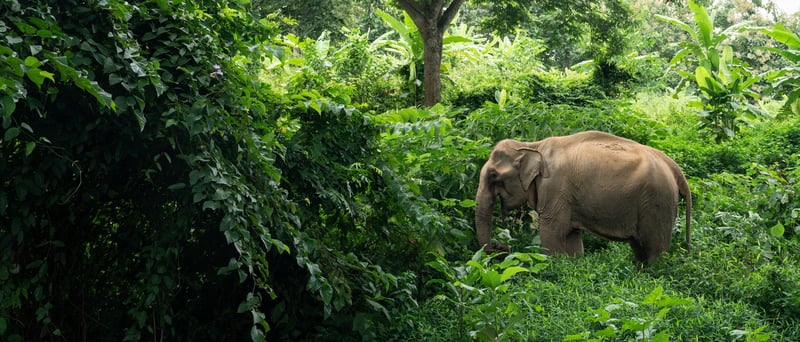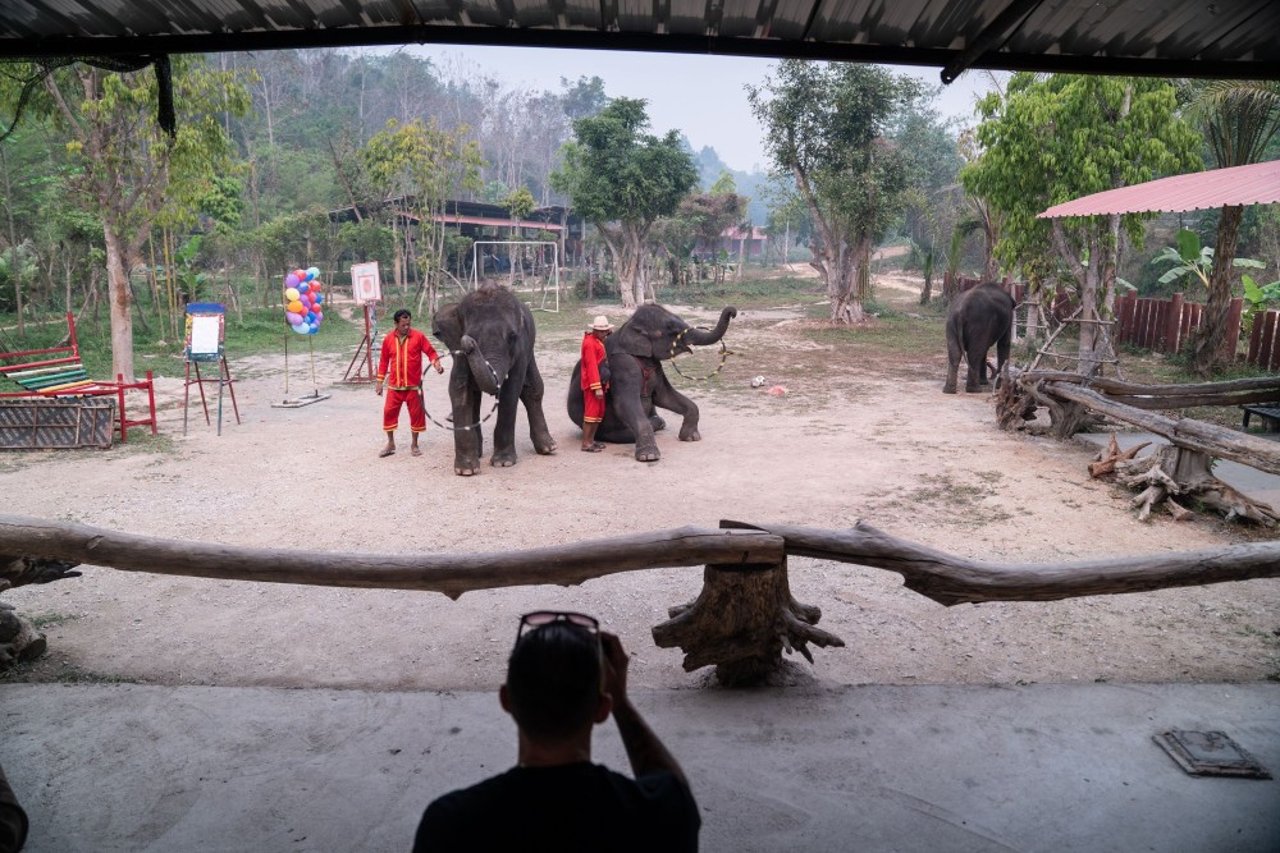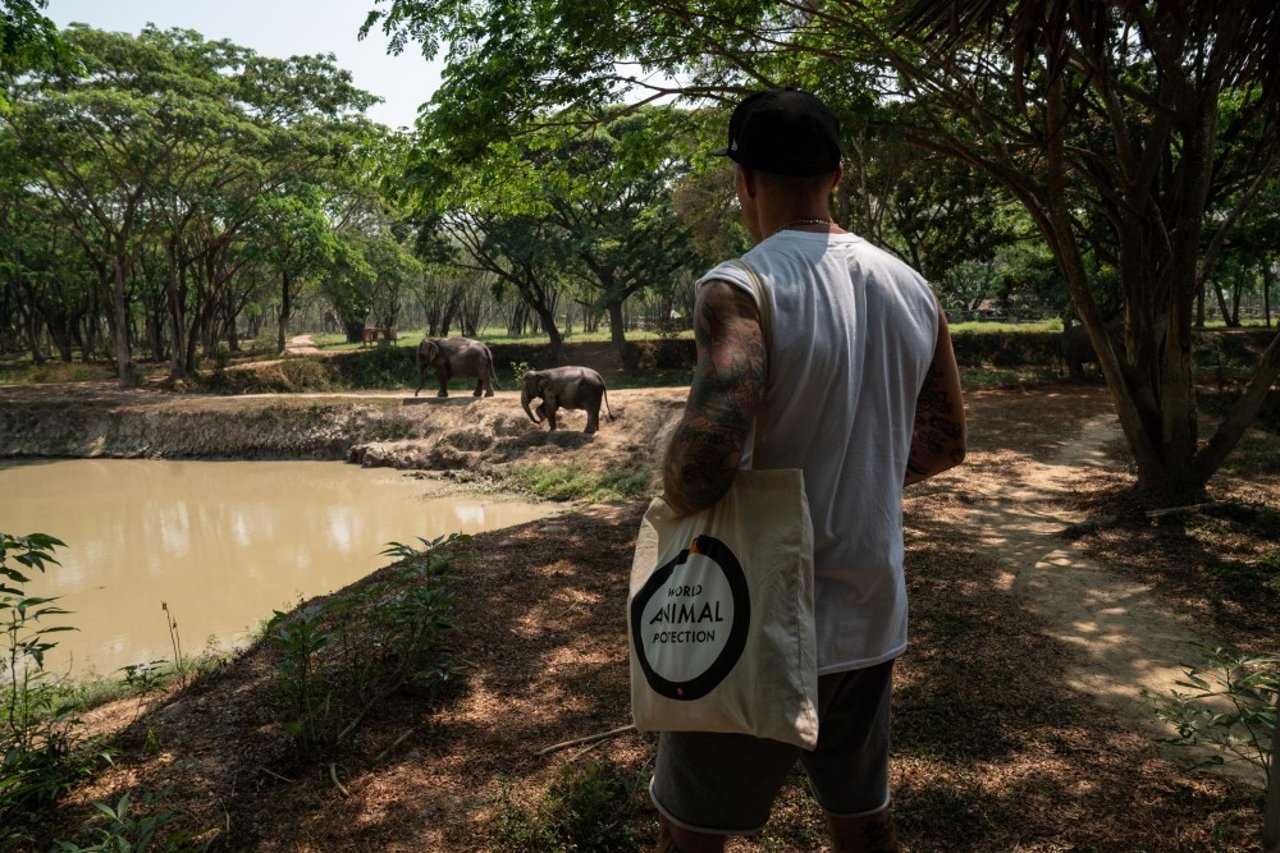
Fighting for elephants in Thai tourism
News
Richie Hardcore is a former Muay Thai champion and coach, campaigner for social change and World Animal Protection wildlife ambassador
I’ve been lucky enough to be visiting Thailand for more than a decade, to train and fight in the sport of Muay Thai. But in all my time I’d never visited a wildlife tourist venue.
What I didn’t know until recently is that Thailand is an elephant tourism hot spot – with more than 4,400 captive elephants used for entertainment.
I had the opportunity to visit northern Thailand with World Animal Protection to learn more about elephants and elephant tourism.
Outside Chaing Mai, I visited ChangChill, a former elephant washing camp which has changed to be elephant-friendly. I got to see six elephants being nurtured into some of their more natural behaviours. At ChangChill they are letting the elephants have a chance to learn to just be elephants once again. There are no pressures to perform for tourists.
After ChangChill, I spent the afternoon at Elephant Valley Thailand in Chiang Rai. Their long-term goal is to release elephants, formerly from logging and riding, back into the wild. In order to do this, the elephants must learn how to be elephants. They need to unlearn their dependence on human contact so they can survive on their own.
From a hut, a safe distance from a large pond, I was able to watch three of the elephants bathe, scratch and eat a lot of grass. It was a truly amazing experience.
After seeing two elephant-friendly venues, I wanted to get a better understanding of the darker side of elephant tourism. Sadly, ChangChill and Elephant Valley Thailand aren’t where most travellers see elephants when they visit Thailand.
So, I paid to go to a traditional elephant camp outside Chiang Rai. What I saw made me quite emotional. The performing elephants emanated such a clearly painful energy, their eyes were wild and scared as they acted in the show the way they had been trained to.
Elephants lined-up, laden with heavy saddles waiting to be ridden. Three young elephants prodded to perform tricks in a show and a baby elephant begging for money to “buy” milk from the store.
Elephants are one of the world’s most intelligent species. They form complex family bonds, they also grieve if they lose a family member and can develop PTSD from traumatic experience, just like we might.
For elephants to submit to being ridden by humans or perform in a show they are forced through a horrific training process known as ‘the crush’. It involves physical restraints, inflicting severe pain and withholding food and water.
This is hugely damaging to their physical and psychological wellbeing. By the time tourists come to a traditional elephant camp, it may look at peace, but this is because its spirit has been broken.
As a society we tend to think only about how animals can serve us or entertain us, without thinking much about their sentience and their right to just exist. But a life in captivity performing for tourists is no life at all for an elephant.
What does that say about our travel culture that a holiday selfie causes a lifetime of suffering for an elephant? And how do we fix all of this?
We all have a chance to change the tourism industry for elephants by voting with our feet, voting with our dollars. Voting with our dollars is a great start. If we only see elephants in a national park or visit a genuine elephant-friendly sanctuary. An elephant-friendly venue won’t let you touch the elephants and won’t let you get too close.
I want to believe most travellers want to do the right thing. So, if you care about animals, and you’re travelling to Thailand then I encourage you to be a responsible, elephant-friendly traveller.
(Images by World Animal Protection/ Nick Axelrod)
What does that say about our travel culture that a holiday selfie causes a lifetime of suffering for an elephant? And how do we fix all of this?

